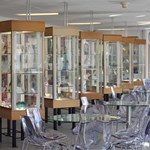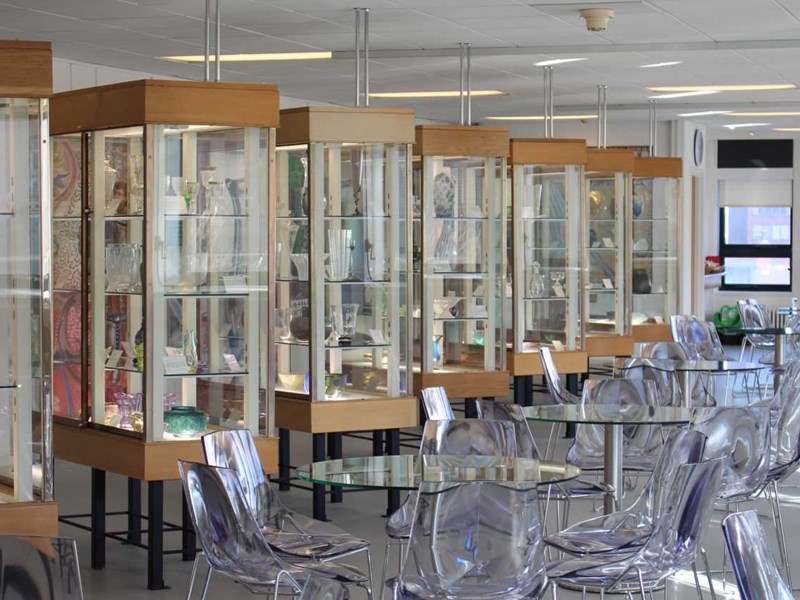

The Turner Museum of Glass is one of the UK's most interesting and comprehensive collections of nineteenth and twentieth century glass.
Professor William E S Turner was arguably the most knowledgeable person of his era on the history of glass. His collection of glass objects, acquired throughout a lifetime of travels and research during the first half of the twentieth century, makes up the basis of the museum’s exhibits.
The collection has continued to grow through acquisitions and donations, such as the collection of eighteenth-century drinking glasses donated by Albert Harland in 1943.
The collection has been catalogued and categorised based on their age and their provenance. There are over 380 pieces on permanent display including:

The Museum was founded in 1943 by Professor W.E.S. Turner. Also responsible for founding the academic discipline of glass technology, Turner was a keen and imaginative collector. He wanted the Museum to act as an inspiration for all those working with glass by showing beautiful objects alongside technical innovation. Turner founded his Museum at the University of Sheffield where he worked. Since 1993 it has been located at the heart of the Department of Materials Science & Engineering where it continues to grow. It is an important resource for research and welcomes visitors from around the world.
From drinking glasses to contemporary installations the Museum celebrates the skill and artistry of glassmakers. Pieces by all the major European and American glassmakers are on display and the collection is unrivalled in its display of work from the 1920s to the 1950s.
